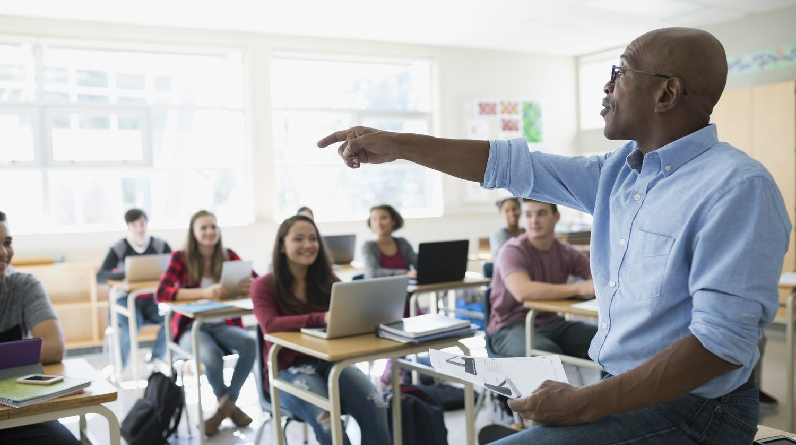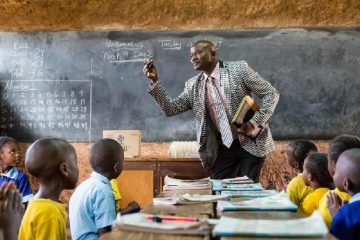How educators can put a stop to bullying and violence in the classroom

Speaking at the Transforming Education Summit, UN Secretary-General António Guterres remarked, “Schools of the future need to be more inclusive, safe, healthy, and stimulating… The prevalence of violence, harassment, and bullying is alarming. All of this works against our efforts to create more accepting communities in which people of all backgrounds are valued and respected.
On the 2022 International Day against Violence and Bullying at School including Cyberbullying, UNESCO will release new data on the role of teachers in making schools safe for all students. The research is based on two different studies, one using data from the Connect with Respect programme in Thailand, Timor-Leste, Zambia, Eswatini, and Tanzania, and the other on a global online survey with responses from 147 countries and discussions with teachers in those countries.
About four out of five educators consider it their job to address the problem of school violence and are confident in their ability to do so. Still, surveys show that many people don’t have a firm grasp on the issue of school violence and admit they don’t take action when they witness violence. One survey found that 24% of teachers did not consider acts like cyberbullying, physical assault, and sexual harassment to be forms of violence. A necessary first step toward reducing violence in schools is raising awareness about the problem and its many faces.
UNESCO’s technical brief emphasises two key areas for bolstering educators’ capacity to address school violence: sustained professional development and robust administrative backing. In an essay on teacher-led solutions to end violence in schools, Filbert Baguma, the Secretary General of the Teachers Union in Uganda, makes similar suggestions. This essay is a part of a collection compiled by Safe to Learn.
To put an end to school-related violence, it is essential that educators respond appropriately and promptly. For instance, in seven African countries, a programme co-led by Education International, Gender at Work, and the United Nations Gender Equality Index (UNGEI) provided safe spaces for over 1300 education union members to confront the entrenched gender and social norms that perpetuate such violence. Teachers’ unions, school administration, and local communities all implemented new anti-violence initiatives in response to the programme, which included efforts to end gender-based violence in and around schools.
However, school violence also affects educators. Teachers report lower levels of motivation, job satisfaction, and commitment to their profession due to student violence in the classroom.
The technical brief claims that while most educators are able to recognise instances of physical and sexual abuse, fewer are able to do so when it comes to instances of psychological abuse. Teachers may rationalise and normalise physical violence against students as disciplinary or classroom management measures in some settings, but they are less likely to recognise physical violence perpetrated by teachers than violence between students.
Children and adolescents from marginalised communities, those with disabilities, and those who self-identify or are perceived as lesbian, gay, bisexual, transgender, queer, or intersex are disproportionately represented in school violence statistics, but teachers are often unaware of this fact (LGBTQI).
Patriarchy, like all forms of structural inequality, is the root of all forms of violence. Values such as tolerance, inclusion, and respect for diversity, children’s rights, recognising unsafe situations, avoiding them, and seeking help, as well as recognising abusive relationships, are taught in depth by many educators. Less than half of educators said they provided in-depth instruction on preventing and responding to online harassment and the impact of social norms regarding race, religion, and gender.
See Also: There has been a fourth mysterious disappearance of monkeys from the Dallas Zoo
The availability of appropriate curricula and training, as well as the attitudes towards violence within the communities in which teachers work, can limit the extent to which they can address school violence. Different expectations between home, school, and community, as well as traditional practises and societal or parental attitudes, are just some of the barriers that prevent many from fully addressing the issue of school violence.
Improved training, legal and policy frameworks, and school-level policies and codes of conduct are all needed to aid educators in providing secure classrooms. Chilean educator Felipe Vivanco emphasised the significance of beginning teacher preparation at the university level. Irish educator Carolyn Marren said, “You have to have a culture that accepts the fact that bullying happens; and you need the support of middle management.”
One in two of the world’s 732 million school-aged children are located in countries where physical punishment is not completely banned for students aged 6-17. Completely prohibiting the use of corporal punishment and receiving unwavering support from school administration and internal structures, such as unions, are both crucial.
While school violence is an issue worldwide, the ways in which it manifests vary greatly depending on the cultural values and beliefs that are prevalent in the community. Inequitable social and gender norms and power dynamics, such as those between men and women or between adults and children, play a role in shaping patterns of violence in schools.
Schools, communities, and governments must all work together to put an end to school violence so that all students are safe to learn and develop to their fullest potential. Teachers play a pivotal role in this all-encompassing strategy and are essential to creating a stimulating and encouraging classroom setting.
Irish educator Rowan Coffey stressed the importance of involving “not just all teachers, but all stakeholders in school” in school-wide collaboration. All of the relevant parties, including students, parents, and the board of directors, need to work together to combat bullying. Everyone needs to be on board with this. Schools, communities, governments, the media, and the private sector all work together to make schools safer, more child-friendly, and gender-sensitive through the holistic whole-education approach promoted by UNESCO and its partners.
Teachers were trained in promoting better relationships among students and improving critical thinking skills on issues like gender inequality and the use of violence through the Connect with Respect programme implemented by UNESCO and partners in 7 countries, and they were then able to guide students to take action themselves through student-led initiatives and peer approaches. Educators also felt more prepared to identify and address acts of violence, and to refer students to appropriate resources.
Teachers’ relationships with students’ families can also play a pivotal role in bridging the school and its surrounding neighbourhoods. Finally, teachers can generate evidence and assess what works at the school level through their teaching and engagement in building a safe environment.
Teachers can contribute to developing a truly transformative educational system if they are given the resources, training, and direction to do so. They have the potential to be at the forefront of efforts to prevent and address all forms of violence in the classroom. At a high-level seminar hosted by UNESCO on November 3rd, this topic will be front and centre, and we encourage people to participate in the dialogue and help enable and empower educators to put an end to violence in the classroom immediately.
Leave a reply
You must be logged in to post a comment.












